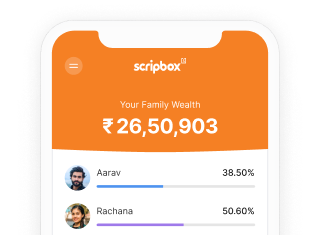For most Indian taxpayers, reducing their tax liability is a top priority. Yet, not everyone is willing to take on the risks associated with equity-linked tax-saving investments. To cater to risk-averse investors, the Government of India has introduced various safe instruments, tax-saving bonds being one of them.
Let’s explore what they are, how they work, and how they differ from tax-free bonds.
What are Tax Saving Bonds?
A Government bond is an investment product that offers either a fixed rate of interest or a fluctuating interest rate on the investment amount. It may or may not have a lock-in period.
Bonds for tax savings are fixed-income investment instruments issued by the Government of India, offering investors a tax deduction on their invested amount. These bonds are structured to attract capital for nation-building, especially in infrastructure development.
While they function similarly to other government bonds – offering a fixed or floating interest rate – they stand out for the tax benefits they provide under Section 80CCF of the Income Tax Act.
Features of Tax Saving Bonds
- The interest rate on tax saver bonds varies from 6% to 8% per annum. The current interest rate for the GOI Tax Saving Bond is 7.75% per annum. As per the government regulations in 2020, these bonds have been discontinued.
- An investor can opt for a cumulative or non-cumulative interest payout option. Under the cumulative option, the interest is compounded every six months and paid along with the principal amount on maturity. While the non-cumulative option provides an interest payout every 6 months. The interest payout date is usually fixed at the time of the issue of the bond.
- The minimum amount of investment is Rs 1,000. No limit on the maximum amount of investment.
- Lock-in period is 5 years. An investor can withdraw after the expiry of 5 years or 7 years.
- Eligible for a tax deduction.
- Interest income is taxable at the slab rate.
- Capital gain is applicable on the redemption of these bonds at the time of maturity.
Who Is Eligible To Invest?
The following types of investors are eligible for investment:
- Individual Indian citizens (including investments made jointly or on behalf of a minor)
- Hindu Undivided Families (HUFs)
- Registered charitable institutions under Section 25 of the Indian Companies Act, 1956 (now Section 8 under the Companies Act, 2013)
- An institution that has obtained a Certificate of Registration as a charitable institution in accordance with a law in force in the Republic of India.
Section 80CCF for Tax Saving Bonds
Investments in certain tax-saving infrastructure bonds – when specifically notified by the government – qualify for a deduction of up to ₹20,000 under Section 80CCF. The deduction is available to an individual or a Hindu Undivided Family. This deduction is linked to a deduction under section 80C.
Please note:
- This benefit was made available in earlier assessment years and was applicable to specific bond issues like those by REC and NHAI.
- Section 80CCF has not been reintroduced in recent years, so it is advisable to check if any such issues are open before investing for this purpose.
What Are Tax-Free Bonds?
Tax-free bonds, on the other hand, are debt instruments issued by government-backed public sector undertakings (PSUs) such as:
- NHAI (National Highways Authority of India)
- IRFC (Indian Railway Finance Corporation)
- PFC (Power Finance Corporation)
- REC (Rural Electrification Corporation)
They offer tax-free interest income under Section 10(15) of the Income Tax Act.
Key Features:
- Issuer: Government-owned companies
- Tenure: Long-term (typically 10, 15, or 20 years)
- Risk Level: Very low, due to sovereign backing
- Taxation:
- Interest Income: Fully exempt from tax
- Capital Gains: Applicable if sold in the secondary market before maturity.
- Liquidity: Tradable on stock exchanges but not redeemable before maturity by the issuer
- Investor Profile: Popular among HNIs, institutions, and retirees looking for stable, tax-free income
Difference Between Tax Saving Bonds and Tax Free Bonds
The following table summarises tax savings bonds vs tax-free bonds:
| Particulars | Tax Saving Bonds | Tax-Free Bonds |
| Issued By | Government of India | Government-backed PSUs |
| Tax Deduction | Up to ₹20,000 under Section 80CCF (if notified) | No tax deduction on investment |
| Interest Income | Taxable as per the income slab | Fully tax-exempt under Section 10(15) |
| Maturity Period | 5 to 7 years | 10, 15, or 20 years |
| Liquidity | Generally non-tradable | Tradable on stock exchanges |
| Investment Limit | No upper limit | No upper limit |
| Target Investor | Taxpayers seeking deductions | Investors seeking tax-free income |
Final Thoughts
If you’re looking for a low-risk, government-backed investment with modest returns and potential tax savings, tax-saving bonds can be a worthwhile option, provided they’re available for subscription.
On the other hand, if your goal is to earn stable tax-free income over the long term, tax-free bonds may suit you better, especially if you fall in the higher income tax slabs.
Both instruments serve different needs. The key is to align your choice with your financial goals, liquidity preferences, and tax planning strategy.
FAQs
Tax-saving bonds (when notified) offered deductions on the invested amount, while interest income was taxable. Tax-free bonds, on the other hand, do not offer any deduction on investment, but the interest earned is completely exempt from tax under Section 10(15).
Yes, the interest earned on GOI 7.75% Savings (Taxable) Bonds is fully taxable as per your income tax slab.
















Show comments